15 January, 1999
January 15th, 1999, South Pole Station
Hello to everybody from the Amundsen-Scott station.
The weather had cleared and the sun was shining. Today was our big
ozone launch day. After I woke up, I went straight to BIF to help out
in the lab. We flu two triple ozones that will help us to answer the
question: ARE THERE DIFFERENCES BETWEEN THE OLD AND NEW OZONE MODELS?
On Wednesday, I introduced to you the different ozone models. Here is
a summery again
OZONE EXPERIMENT WITH TRIPLE OZONES:
Two triple-ozonesonde will be tested (two replicates: total 6
ozonesondes)
1. the first set will contain the 1% KI buffered solution
2. the second set will contain the 2% KI, unbuffered solution
Each triple-ozone set will have the following model of ozonesondes: a)
Old Model (4A) used since the 80'ties Features: - 6v motor pump
- Teflon electrochemical cells connected to gears (no
electronical interface)
- Analog data is collected
b) New model ( 6A) , used since the 90'ties
Features: - 12v motor pump
- Teflon electrochemical cells
- electronical interface, digital data collects
c) New model (2Z) similar to above except different material (molded
plastic instead of Teflon) for
electrochemical cells.
The flights went really well and we collected a lot of data, which we
will have, to process to receive the row data files. We all were happy
that all went well: that the balloon went up to 35 km and that the
transmission of all data was successful. An experiment like this has
never been done before - in parcticular two in the row. I am looking
forward looking at some of the graphs. The monitoring of ozone data is
very important in order to see if older data is actually valid. How
could we otherwise make certain that our conclusions about ozone data
is correct?!
Something very strange happened with the second flight. All went well
with the data transmission and the balloon made it up to 38 km with
the load like that. However, it did not burst. Usually, a flight like
that -- including descending time usually lasts for 2-3 hors. The
balloon floated around 38km still after 5 hours of flight time. We
checked the temperature at that altitude and it was -9C. Can some one
explain why the balloon would not burst at that height with that
temperature?
We will never find out what happened with the balloon since we had to
turn off the computer. We would have liked to have also the data while
the balloon was descending, but… the solutions in the cell must have
been evaporated because the last readings did not give as any ozone
readings anymore. "Good by balloon I wish I could see you and follow
you or at least see what you see!!. "
I am looking forward working on these files with Bryan and transmit
them to schools. Remember to contact me if you are interested working
on ozone data files.
Before dinner, we went to the ARO 'slushies' time: the tradition is to
use the cleanest snow on earth to make drinks and café. It was a lot
of fun. Mmmm. Fresh snow!! The question from yesterday was : when will
the sun set at the South Pole? Around March 23rd when our springtime
starts in the North. A lot of people will winter-over and are looking
forward to see this event. By now it is 6a.m. I will try to sleep and
mail this report off in a few hours. Question for tomorrow: when will
the sun rise again at the South Pole?
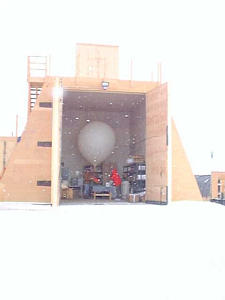
The BIF with the doors open. The balloon is inflated and the ozonesonde is attachet
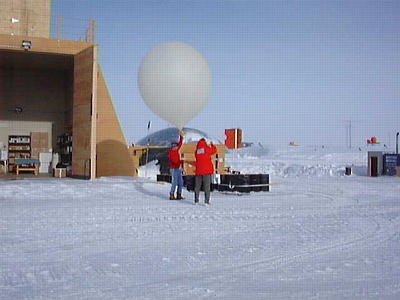
Andy and Bryan are carrying the balloon outside the BIF for launching.
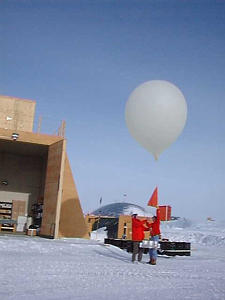
The rope to the balloon is followed down to the sonde... almost ready to let go.
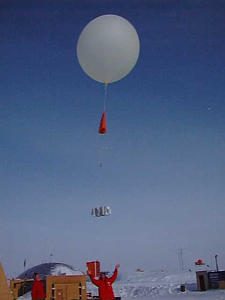
Bryan lets go of the triple ozonesonde and the balloon is launched.
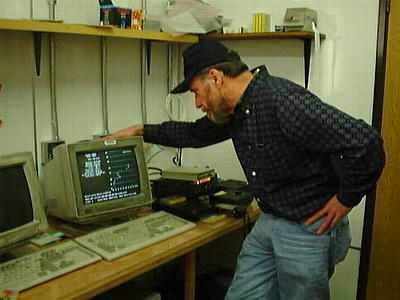
Dave Hofmann following the ozone data on the computer
Contact the TEA in the field at
.
If you cannot connect through your browser, copy the
TEA's e-mail address in the "To:" line of
your favorite e-mail package.
|
